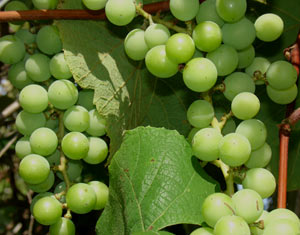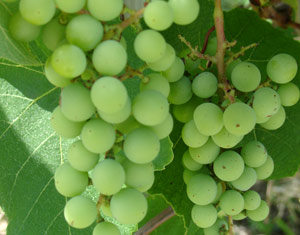

Posted on 05/27/2007 9:59:57 PM PDT by Clemenza
California's premier Napa Valley wine region on Thursday became the first US terroir to have its name protected in the European Union.
Napa Valley's official "Geographic Indication" was announced by European Commission agricultural attaché Jean-Marc Trarieux at the German consulate in San Francisco.
"Europe does not have a monopoly on producing fine wines," Trarieux said. "Napa Valley has done an outstanding job."
The Napa Valley Vintners Association petitioned the commission in 2005 to have the names "Napa" and "Napa Valley" recognized with GI status to provide the US wine country names legal protection against trademark infringement.
In late January 2007 the EU Wine Committee approved the status for Napa Valley.
"This represents a significant win in the continuing fight to protect the Napa name around the world," said vintners association board president Peter McCrea.
The non-profit trade association represents nearly 300 wineries in Napa Valley, which is part of a campaign by vintners from France, Spain, Portugal, Italy, Hungary, and Australia to protect wine region names from misuse.
"We now have a new, international legal precedent on which to base our trademark protection efforts in Europe," said Napa vintners association board member Pat Stotesbery.


Lol, when's the public tasting?
I've got a few wild grapevines in my woods/wetland but they are so awful even the birds don't eat them!
Those grapes ripen in mid June. I know they are ripe when the birds have devoured them overnight. Have some muscadines too.
In our house, Paso Robles wines are the most sought after.
IOurHO, Paso hs the best Syrahs and Zins anywhere, and some great Cabs and Viogniers to boot.
ES
NautiNurse wine. Someone should make a label for you.
I want some!
Here's the deal--if you stomp the grapes, you can have as much wine as you want!
OTOH, Calistoga has a nice little grocery for picking up the perfect bits for a picnic with your wine.
Yes perhaps so, but our modern-day litigious society says otherwise, that's the point of the article.
This is analogous to ripping someone's "™" and that's a no-no. And besides, lacks verification and thereby cannot justify the value of the wine.
Traditional wine nomenclature is not synonymous to the 'why' of a trademarked label.
If the CA folks are smart, they'll protect what they have earned. And that goes for a few other pockets too.
You do know the Chinese lead the world in forged wines?
The analogy to trademark is inapt: in order to obtain a trademark one has to demonstrate no one else is using the proposed mark. That's simply not the case with wine labelling, the generic names (which are French or German geographic regions) were used widely before the notion of trademark even existed.
Of course, I agree with you that the California wine folks should protect their own AVAs and marks. Actually, over the years there have been many wineries which have trademarked various 'proprietary' marks, not all of them so very wonderful. (One thinks of Sebastiani's "Eye of the Swan" blush pinot noir - which was quite good the first two years it was made - a forerunner to the white zinfandel craze of a 15-20 years ago that put Sutter Home (which actually once made good zin) on the commercial map, or various others over the years.
And, I did know the Chinese are doing forged wines in quantity. It's well known in the trade that one can do quite a bit to spruce up (if you will) quite mediocre (or worse) wine to make it seem like something it isn't, at least for a bit of time. And, when people doing the tasting don't really know what they're doing, it's fairly easy to fool them. (Even professionals are often fooled by wine: I think it was Hugh Johnson who, when asked if he had ever mistaken a burgundy for a bordeaux, replied "yes, today at lunch" - conveying the notion that even experts' knowledge was not infallible. And, it was well known in the trade and among serious oenophiles 20 years ago (don't know if it's still common knowledge) that by far the greater part of what used to be sold as French "burgundy" (AC wines, even cru classe wines) had a healthy dollop of Algerian red in them for body. (Much the same way, in the old days (pre-1970) in California, a wine-maker would blend grapes for specific properties, adding (for example) Zinfandel for body, grenache or carignan for color, and so on. In those days you could lable a wine as varietal with only 51% of a variety in the blend (changed to 75% around that time), and people took advantage of the possiblities. Almost all cabernet and pinot noir (except BV and sometimes Inglenook) had substantial amounts of Zin in it. The generic reds would be blends primarily of zinfandel, carignan, and grenache, maybe with a little petit sirah (but there wasn't much of it planted) for good measure.
Disclaimer: Opinions posted on Free Republic are those of the individual posters and do not necessarily represent the opinion of Free Republic or its management. All materials posted herein are protected by copyright law and the exemption for fair use of copyrighted works.